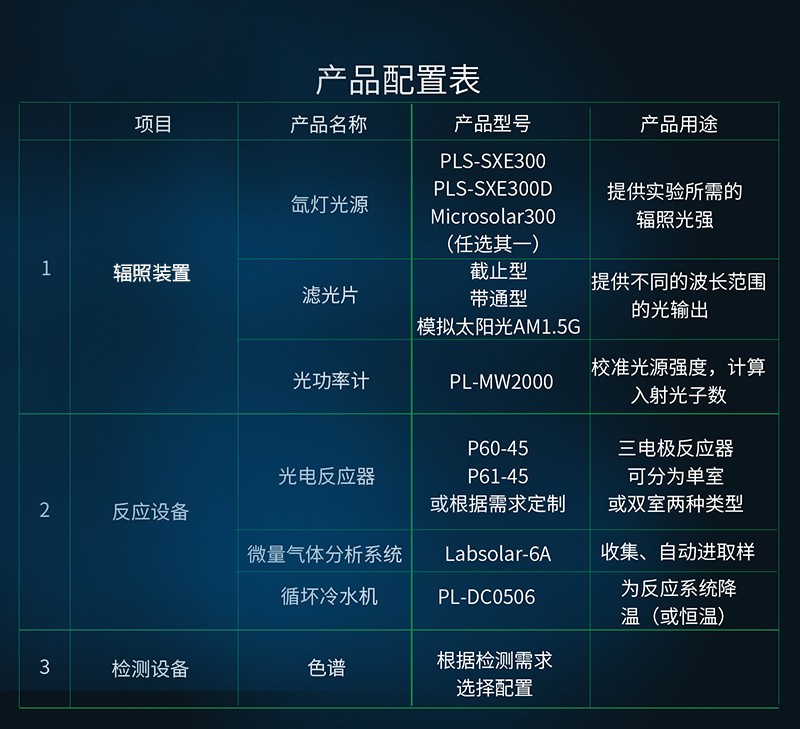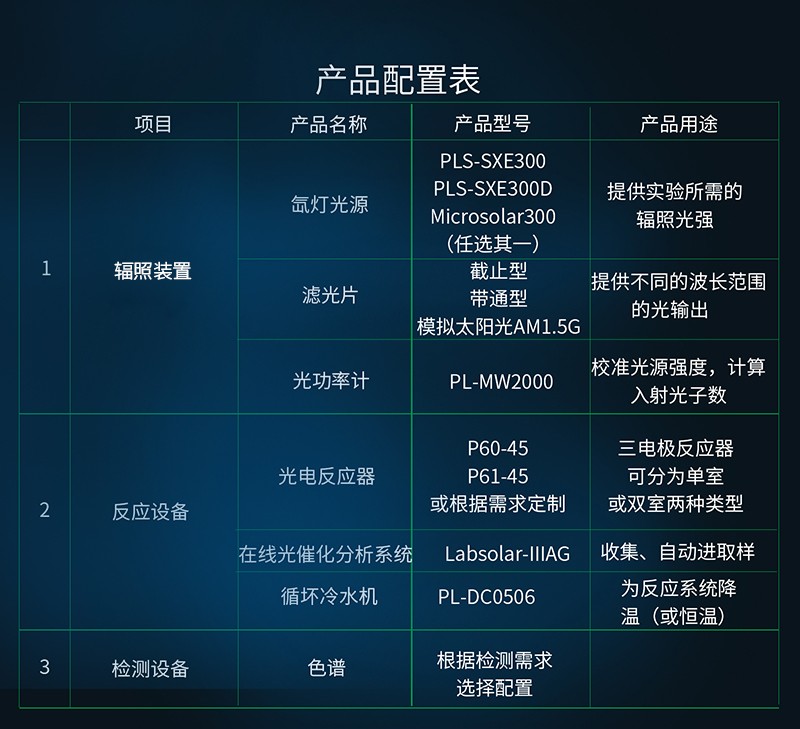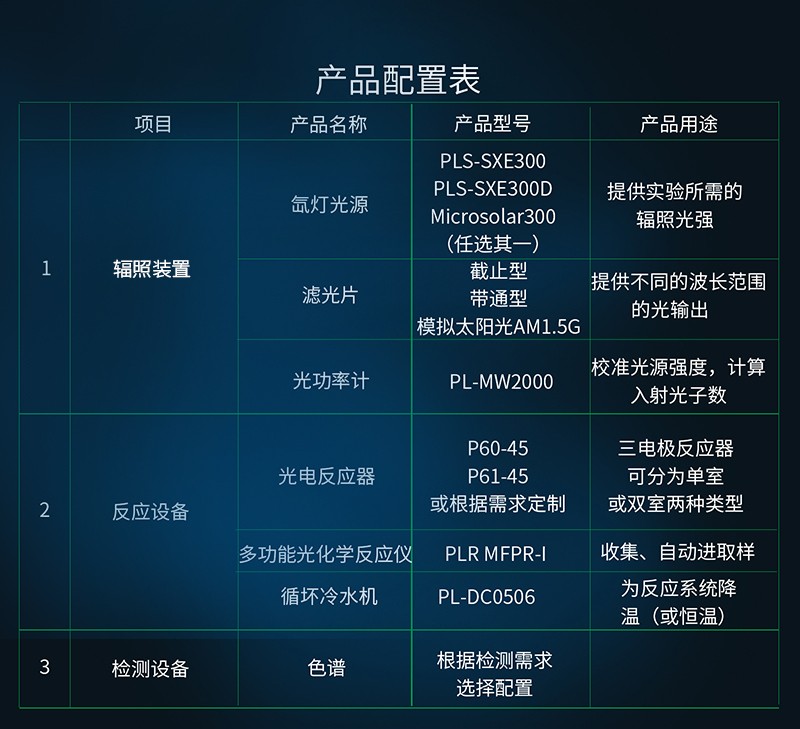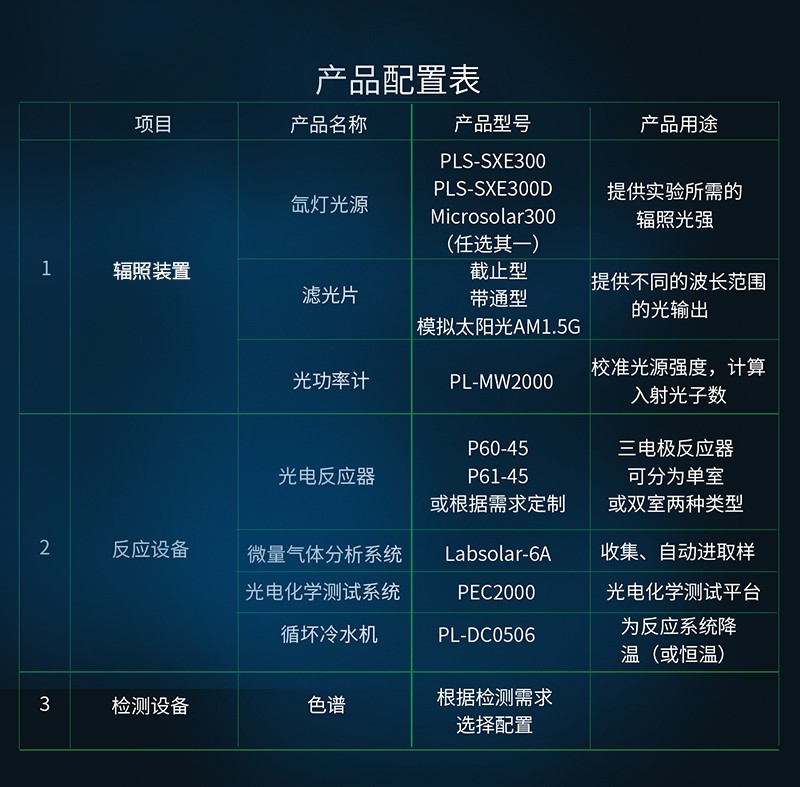Photocatalysis involves the use of photocatalyst powder suspended in a water solution to photocatalytically decompose water and produce hydrogen. It utilizes the photo-generated holes and electrons on the semiconductor-based photocatalyst particles to participate in the oxidation and reduction of water on the surface of semiconductor particles under illumination. This method has lower costs, but hydrogen and oxygen separation is difficult, and reverse reactions are prone to occur, resulting in current solar energy utilization efficiency remaining below 2%.
The study of photoelectrochemical (PEC) water splitting for hydrogen production involves the participation of photo-generated holes and electrons on the photoelectrode surface in oxidation and reduction reactions under photo-generated voltage and external bias. The use of external bias effectively suppresses the recombination of photo-generated electrons and holes, enhancing light utilization efficiency. This feature has ignited a research trend in the field of energy.
The challenges in constructing devices for photoelectrocatalysis include the construction of a three-electrode system and the adaptation of light sources. Based on different application scenarios, I provide the following solutions:
Option 1: Fiber-optic light source + Electrochemical workstation + 6A + Three-electrode reactor + Chromatograph
Option 2: Fiber-optic light source + Electrochemical workstation + IIIAG + Three-electrode reactor + Chromatograph
Option 3: Fiber-optic light source + Electrochemical workstation + Multifunctional photochemical reactor + Chromatograph
Option 4: 6A + PEC2000 Photoelectrochemical Catalysis Testing System

Advantages of the Solution:
1. Glass multi-port sampling valve (embedded quantitative loop) + Automatic actuator, realizing automated sampling injection on the glass valve for the first time; providing a structural basis for circulation efficiency while ensuring airtightness. Avoiding placing the sampling valve on the chromatograph, eliminating glass tubing in the circulation pipeline to prevent adsorption, and promoting better circulation of sample gases with lower resistance;
2. Built-in instrument methods, requiring only the setting of sampling period and frequency, simplifying operation; fully automated sampling process, achieving 24-hour unattended operation, saving researchers' time; manual operation functions are also retained;
3. Small circulation volume of the system, about 300 mL, using a high-throughput magnetic plunger pump for rapid circulation, achieving uniform gas circulation in about 5 minutes. More sample points for product detection can be taken within the same reaction cycle;
4. Excellent air tightness, with oxygen leakage <3 μmol in 24 hours, ensuring accurate experimental testing and the accuracy of oxygen production experiments;
5. Linear regression of standard curve: System achieves ≥0.999 within the range of hydrogen production from 100 μL to 10 mL; RSD of repeated sampling <3%;
6. Outstanding expansion and compatibility, with a rich reactor library. Gas-solid phase experiments (with in-situ temperature measurement) can be conducted by replacing reactors, or combined with PEC2000 to realize online measurement of gas and electrical signals for Faradaic efficiency;
7. Multi-functional quantitative buffer gas storage device, adjustable system capacity to accommodate different gas production requirements for system sampling volume;
8. Real-time monitoring of system status, Labsolar 6A Photoelectrocatalytic Testing System Monitoring System measures reaction pressure, temperature, and automatic multi-port valve status. Together with the aforementioned points, system accuracy and repeatability are ensured;
9. Whole-machine delivery, portable installation without on-site open flames, ensuring laboratory safety;
10. Metal protective casing provides protection for system glass components, radiation, and potential reaction gas leakage. The glass tubing is mostly concealed, resulting in a neat appearance with minimal size increase, measuring only 490×520×740 mm.


Advantages of the Solution:
1. Classic structural design, numerous satisfied users, high cost-effectiveness;
2. Entirely glass material to fundamentally eliminate errors caused by metal adsorption in experimental results;
3. Dual six-port injection valves to prevent gas misdraw and ensure accurate sampling;
4. Quantitative loop of about 1.5 ml, allowing for large sample volume and high sensitivity;
5. Multi-functional quantitative buffer gas storage device, adaptable system capacity;
6. Complete system delivery, portable installation without on-site open flames, ensuring laboratory safety;
7. Outstanding expansion and compatibility, compatible with photoelectric testing, and expandable for carbon dioxide reduction experiments.


Advantages of the Solution:
1. Capable of withstanding testing at certain temperatures and pressures, with a maximum temperature resistance of 180℃ and maximum pressure resistance of 0.9 Mpa;
2. Compact size, occupying minimal laboratory space, space-saving;
3. Large sample-to-volume ratio, high sensitivity. System volume is about 100 mL, with a quantitative loop of 0.2 mL;
4. Fully automated sampling, 24-hour unattended operation, time-saving;
5. Rich and diverse functionality, suitable for top irradiation and side irradiation, capable of conducting both photochemical and photoelectrochemical tests;
6. Expandable for electrocatalysis, photoelectrocatalytic hydrogen production, and carbon dioxide reduction experiments.


Advantages of the Solution:
1. Integrated intelligent equipment, more compact space, and simpler operation;
2. High precision, automation, digitization, using a laser collimation positioning system for more accurate experimental data;
3. Special high-uniform adjustable fiber-optic light source designed specifically for photoelectrode irradiation;
4. Equipped with a laser optical path collimation system;
5. Rich in functionality, capable of measuring I-V, I-t, electrochemical impedance spectroscopy, hydrogen, and oxygen generation.
